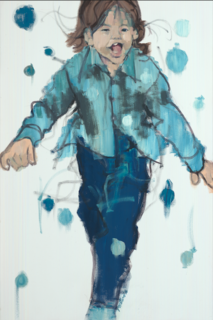
Khai
Khai was born in December, 2008. He was a happy baby. He always wanted to be read to and learn something new, which was nice when he started school. He was healthy and seldom had the slightest illness; not even a common cold or fever. In October 2015, Khai walked into his first grade class, put away his backpack and suffered a severe seizure which lasted three to four minutes. That event has forever changed my son’s life. I was told by the emergency room doctors at the pediatric hospital that children sometimes have an unexplainable seizure and then never have a reoccurrence. As no other explanation was provided, Khai was released to return to school the following day.
Khai was eventually diagnosed with cavernous malformation. The doctors explained that Khai had bleeding on the brain, and he had developed neurological deficits including weakness in the arms and legs, problems with memory and balance, and difficulties with vision or speech due to the cavernous malformations. Because of the bleeding on his brain he is also at risk of hemorrhagic strokes and seizures.
Today, through his trials, Khai is the happy bubbly child he has always been. He loves playing with action figures, watching movies, swimming and playing at the park when he feels up to it.
~Shaunte, Khai's Mom
Cerebral Cavernous Malformation
Cerebral cavernous malformations (CCMs) are collections of small blood vessels in the brain that are enlarged and irregular in structure which lead to altered blood flow. Cavernous malformations can occur anywhere in the body, but usually produce serious signs and symptoms only when they occur in the central nervous system. Cavernous malformations in the brain and/or spinal cord are called cerebral cavernous malformations. Approximately 25 percent of individuals with cerebral cavernous malformations never experience any related medical problems. Other people with cerebral cavernous malformations may experience serious symptoms such as headaches, seizures, paralysis, hearing or vision deficiencies, and bleeding in the brain. These malformations can change in size and number over time, but they do not become cancerous. This condition can be sporadic, or it can be inherited in an autosomal dominant pattern. Mutations in the KRIT1 (CCM1), CCM2, and PDCD10 (CCM3) genes cause cerebral cavernous malformation. Treatment depends upon the symptoms. Seizures are usually treated with antiepileptic medications or surgery.
Artist: Colin Howel




